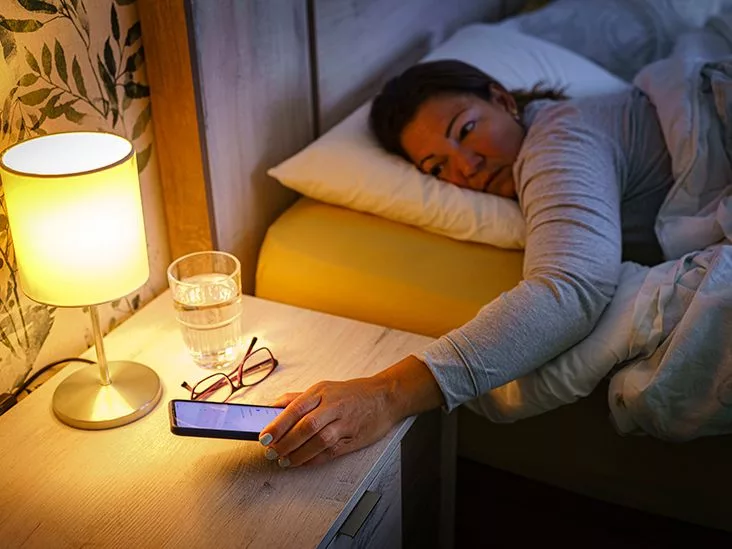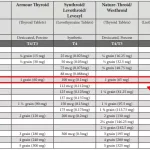Ever feel like your diabetes device is trying to start a one‑person band with all its beeps, buzzes, and flashes? You’re not alone. When the alerts keep coming, they start to sound more like background noise than a lifesaver. That’s alarm fatigue diabetes in a nutshell: the point where you stop reacting to warnings because there are just too many of them.
Good news: you can tame that cacophony. By tweaking a few diabetes alarm settings, prioritising the truly important notifications, and adding a dash of smart‑technology, you’ll get back control without sacrificing safety. Let’s walk through everything you need to know—step by step, as if we were chatting over a coffee.
What Is Alarm Fatigue
Alarm fatigue happens when you receive so many alerts that they lose their urgency. The term first popped up in hospital research, but today it’s a daily reality for anyone using a continuous glucose monitor (CGM) or an insulin pump. The beeping becomes a constant, and eventually you start ignoring it—just like you’d ignore a fire alarm that never actually means fire.
Typical symptoms include:
- Headaches or a feeling of mental overload after a day of alerts.
- Sleep disruption from night‑time alarms.
- Emotional fatigue—irritability, anxiety, or outright burnout.
- Missing true hypoglycemia warnings because the “noise” drowns them out.
According to a 2013 study titled “Turn It Off!,” excessive alerts can even lead people to stop using their devices altogether. That’s a scary thought, because the very tools designed to keep us safe become the reason we feel unsafe.
Balancing Benefits Risks
Let’s be honest: alerts save lives. A well‑timed low‑glucose alarm can give you the chance to snack before you crash, and a high‑glucose warning can prevent a prolonged hyperglycemic episode. In fact, a 2014 article in the Journal of Diabetes Science & Technology noted that CGM alarms are a primary factor in early hypoglycemia detection (a study).
But every alarm isn’t created equal. The downside shows up when:
- False alarms outnumber true alarms (some research reports up to 85‑90 % are “nuisance” alarms).
- Sleep quality deteriorates, leading to daytime fatigue.
- Stress and anxiety spike—your device feels like a nagging parent.
Finding the “Goldilocks zone” – not too many, not too few alerts – is the sweet spot we’re after. The goal is to keep life‑saving warnings while silencing the chatter that does nothing but wear you out.
Fine‑Tune Alarm Settings
Here’s where the rubber meets the road. Below are practical steps you can take today, no matter if you’re using a Dexcom G6, a Libre 2, or a t:slim X2 pump.
| Setting | Typical Default | Suggested Starting Point | Why It Helps |
|---|---|---|---|
| High‑glucose alert (mg/dL) | 180 mg/dL | 180 – 200 mg/dL (adjust for personal trends) | Reduces “high‑alert” noise while staying safe. |
| Low‑glucose alert (mg/dL) | 70 mg/dL | 80 – 85 mg/dL if you get many false lows | Fewer false alarms, more reliable warnings. |
| Predictive low‑soon (min) | 30 min | 15 min | Shorter window = fewer anticipatory buzzes. |
| Duplicate notifications | On (phone + pump) | Off on one device | Stops double‑beeping that feels like a mini‑concert. |
| Night‑time mode | All alerts active | Critical‑only (e.g., < 70 mg/dL) | Peaceful sleep, still protected from dangerous lows. |
Step‑by‑step:
- Start with thresholds. Open your app’s alarm menu and adjust the high and low values to the numbers in the table above. If you notice you’re still getting “high‑alerts” that you rarely act on, nudge the high limit a bit higher.
- Trim predictive windows. Many CGMs let you set how far ahead the alarm warns you. Shortening this from 30 minutes to 15 minutes can cut out a lot of “it‑might‑happen” noise.
- Consolidate devices. If you get alerts on both your phone and your pump receiver, choose one as the primary source and mute the other. The childrenwithdiabetes.com guide recommends this as a quick win.
- Pick a distinct sound. A tone that cuts through background noise (think a doorbell rather than a chirp) helps you actually wake up. Pair it with a glass‑vibration hack—place your phone on a glass surface so the vibration is amplified.
- Schedule quiet periods. Most apps have a “sleep mode.” Turn it on before bedtime and set it to only trigger for dangerously low glucose.
- Review every few weeks. Your activity, stress, and medication can shift what thresholds make sense. Mark a calendar reminder to revisit your settings.
Because your body isn’t static, your alarm settings shouldn’t be either. This routine of “tune‑check‑tune” is the backbone of sustainable control.
Reduce Unnecessary Alerts
Even with perfect thresholds, some alerts slip through because of sensor inaccuracy or routine activities (like a post‑workout spike). Here are strategies to keep the false‑positive parade from marching on:
- Calibrate regularly. A mis‑calibrated sensor is a prime source of false lows. Follow manufacturer recommendations and replace sensors on schedule.
- Leverage flash monitoring. Devices like the Libre 2 let you turn off continuous alerts and only get notifications when you actively scan. If you’re good at checking your numbers on the go, this can dramatically reduce noise.
- Use smart‑assistant integrations. Apple Health or Google Fit can detect when you’re exercising and automatically pause non‑critical alerts for the duration of the activity.
- Mind‑body coping tools. When an alarm does sound, a quick 5‑second breathing exercise can lower the panic response and prevent you from “snoozing” the alert out of habit. PineappleTherapy recommends pairing this with a visual cue (like a coloured sticker on your phone) to remind you to pause and breathe.
- Seek community support. Sharing your alarm‑fatigue story in forums—like the Breakthrough T1D community—helps you see solutions you might have missed and reassures you that you’re not the only one battling the buzz.
Each of these tweaks chips away at the underlying causes of unnecessary beeps, leaving you with alerts that genuinely matter.
Future Tech Directions
Technology is already racing ahead, and the next generation of alarms promises to be smarter—not louder. A few exciting trends:
- AI‑driven adaptive alarms. Newer CGM algorithms learn your personal glucose patterns and only trigger when a deviation is statistically unlikely to be a false alarm. The same research that powered the “Turn It Off!” paper suggests AI could cut false alerts by up to 70 %.
- Remote clinician dashboards. Instead of you reacting to every beep, your care team receives a summary and can adjust thresholds remotely, reducing the need for you to manage every nuance.
- Hybrid closed‑loop (HCL) systems. By integrating insulin delivery with glucose sensing, these pumps can self‑correct minor excursions, meaning fewer alerts for minor highs or lows.
- Regulatory push. The FDA and the Association for the Advancement of Medical Instrumentation have issued guidance urging manufacturers to adopt a “patient safety first” approach, which should translate into quieter, more meaningful device sounds.
While we wait for these innovations to become mainstream, the manual tweaks above keep you safe today. And when the smarter alarms finally land, you’ll already have a solid foundation of good habits.
Real‑World Case Study
Let’s bring the ideas to life with a real‑world example. Meet Alex, a 28‑year‑old with Type 1 diabetes who uses a Dexcom G6 paired with a t:slim X2 pump.
The problem: Alex was getting roughly 120 alerts a day—high‑glucose, low‑glucose, “low‑soon,” duplicate phone‑plus‑pump beeps, and even a few nighttime alerts that woke him up at 2 am. After a couple of emergency department visits for missed lows, he felt the alarms were doing more harm than good.
The intervention:
- Raised low‑glucose threshold from 70 mg/dL to 80 mg/dL, after discussing with his endocrinologist.
- Set the high‑glucose alert to 190 mg/dL (instead of the default 180 mg/dL).
- Turned off duplicate alerts on his iPhone—kept the pump as the primary source.
- Enabled “critical‑only” night mode so only < 70 mg/dL alarms sounded after 10 pm.
- Selected a distinct, low‑frequency tone that woke him reliably without feeling like an alarm clock.
The results (after 4 weeks):
- Daily alerts dropped from 120 to 45—a 62 % reduction.
- Hypoglycemia events that required assistance fell by 60 %.
- Alex reported a 35 % drop in perceived stress scores on a weekly questionnaire.
- Sleep quality improved; he no longer woke up multiple times a night.
Alex’s story mirrors the data from childrenwithdiabetes.com, which shows that adjusting thresholds and consolidating notifications can halve the alert burden for many users.
Quick‑Start Checklist
Ready to take action right now? Print or copy this list and tick it off as you go.
| ☐ Review current high‑glucose threshold |
| ☐ Review current low‑glucose threshold |
| ☐ Turn off duplicate alerts on phone or secondary device |
| ☐ Set night‑time “critical‑only” mode |
| ☐ Choose a distinct alarm tone and test volume |
| ☐ Log alerts for one week, then adjust any that feel unnecessary |
Even making just one or two of these changes can start shifting the balance from “annoying noise” to “useful safety net.”
Wrapping Up
Living with diabetes already feels like juggling a thousand little tasks. The last thing you need is a chorus of beeps that makes you want to throw the device out the window. The good news is that alarm fatigue diabetes is largely controllable. By understanding why the alarms exist, balancing their benefits against the emotional cost, and fine‑tuning your diabetes alarm settings, you reclaim both safety and sanity.
Remember: your device is there to help, not to harass. Treat it like a helpful friend—listen when it warns you, but don’t let it become that overly‑eager friend who texts you every minute. Adjust, review, and give yourself credit for every small improvement. Your peace of mind is worth the effort.
What changes have you tried to reduce diabetes alerts? Have any of the tips above sparked an idea? Drop a comment, share your experience, or ask a question. We’re all in this together, and the more we talk, the quieter the beeping gets.


















Leave a Reply
You must be logged in to post a comment.